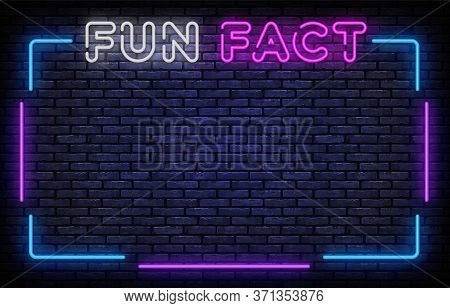Neon is a fascinating element that captivates both scientists and the general public with its mesmerizing glow. This noble gas, typically found in the Earth’s atmosphere in trace amounts, is not only essential for the neon signs that light up our cities but also plays a significant role in various scientific applications. Here are some fun and intriguing facts about neon, showcasing its unique characteristics, historical significance, and practical uses.
1. Discovery and Historical Significance
Discovered in 1898 by British chemists William Ramsay and Morris Travers, neon was identified during an experiment to isolate components from liquid air. The name “neon” is derived from the Greek word “neos,” meaning “new,” signifying its novelty at the time. Its discovery was pivotal in the development of modern gas lighting technology, leading to its widespread use in neon signage.
2. Neon’s Atomic Composition
Neon is a member of the noble gases group in the periodic table, with an atomic number of 10. Its atomic structure comprises 10 protons and 10 electrons, and it exists as a colorless, odorless gas at room temperature. Neon’s stable electron configuration makes it inert, which means it does not readily form compounds with other elements, contributing to its distinctive qualities.
3. Neon’s Radiant Glow
The captivating glow of neon is a result of its ionization. When an electric current passes through neon gas in a glass tube, the electrons become excited and then release energy in the form of light as they return to their lower energy states. This luminescence primarily appears red-orange, which is characteristic of neon gas. However, once combined with various phosphor coatings or when mixed with other gases, varying colors can be achieved.
4. Neon vs. Other Gases
Neon is often compared to other noble gases such as argon, krypton, and xenon. While these gases can also produce light when ionized, neon’s emission spectrum is unique. For example, argon typically emits a blue-violet hue, while xenon can produce a range of colors, including bluish-white light. This unique emission spectrum makes neon ideal for creating vibrant signage.
5. Economic and Industrial Importance
Beyond its aesthetic appeal, neon has crucial industrial applications. It is used in high-voltage indicators, vacuum tubes, and gas lasers. Neon gas is also employed in the manufacture of plasma televisions and various lighting applications. The demand for neon has significantly increased in recent years, especially with the rising popularity of neon-themed decor and art. However, extracting and producing neon can be resource-intensive, contributing to its relatively high market price compared to other gases.
6. Neon in Everyday Life
Neon signs, often seen in urban landscapes, are perhaps the most recognizable application of this gas. These signs have become cultural icons, often associated with nightlife, entertainment, and advertisement. The artistry behind neon sign-making involves bending glass tubes to create intricate shapes, demonstrating skilled craftsmanship. Additionally, neon gas is now often utilized in art installations, further enhancing its prominence in modern culture.
7. Neon and Its Environmental Footprint
While neon is non-toxic and environmentally benign, its extraction process comes with ecological considerations. The primary source of neon is the fractional distillation of liquefied air, which requires substantial energy. Additionally, the production of neon signs involves the use of other chemicals and materials, which raises questions about sustainability. As the neon market expands, it becomes essential to focus on environmentally-friendly practices in both production and disposal.
8. Neon in Astronomy
Neon gas also finds a place in astrophysical research. It is present in trace amounts in the sun and other celestial bodies. Astronomers can study neon lines in the spectrum of stars and nebulae to glean information about interstellar conditions, temperature, and chemical compositions. This application exemplifies neon’s importance not just on Earth but also in understanding the universe.
9. Neon and Health Applications
Chiropractors and physical therapists have begun utilizing neon gas in therapeutic settings. Some studies suggest that neon, when used in specific pressure conditions, may improve certain types of pain relief. However, research into medical applications for neon is still in nascent stages, indicating the need for further exploration into its potential benefits.
10. Neon’s Future Potential
As technology progresses, the future of neon may see further innovations. Research into alternative lighting technologies like LEDs might overshadow traditional neon applications. However, the nostalgia and aesthetic appeal of neon signage ensure its continued relevance in pop culture and artistic expression. The potential for discovering new applications, especially in technological advancements and art, keeps neon in the spotlight.
In summary, neon is not merely a component of colorful signs; it is a gas with a remarkable history and a plethora of applications that span various fields. Its unique properties, combined with modern technological advancements, lay the groundwork for continued interest and exploration. The glow of neon is more than just light; it encapsulates the intersection of science, art, and culture.






